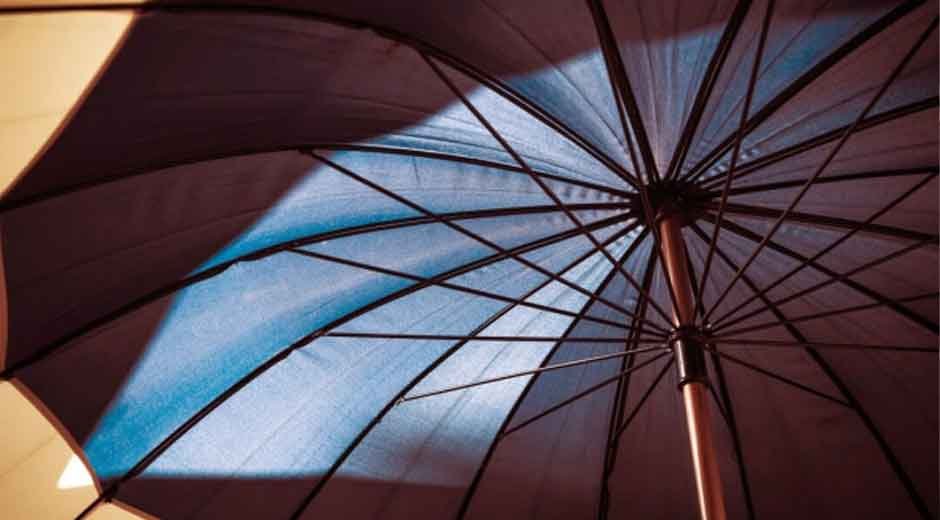Imagine this: you’re lounging on your patio, soaking up the warm summer breeze under the shade of your umbrella. But over time, that once-vibrant canopy starts to fade, fray, or even tear due to constant sun exposure. Before you know it, your outdoor oasis doesn’t look so inviting anymore.
The key to keeping your patio umbrella looking fresh and lasting longer? Choosing the right fabric of your gear. The optimal one will withstand the elements, resist fading,a nd give you the best value for your money.
In this article, we’ll discuss the best outdoor fabrics you can use on your patio umbrellas to keep them looking great!
Acrylic
For the best UV resistance and highest quality material, you can’t go wrong with solution-dyed acrylic. It’s soft and breathable with a matte finish, and anyone would describe it as luxurious. This is why you can find it in top-class resorts.
You can get 98% UV protection, plus the material is fade-resistant. In fact, solution-dyed fibers retain color for over a decade, especially if you practice proper care.
On top of that, it’s water and mildew-resistant. If the material does get dirty, it’s easy to clean with soap and water (use bleach for the tougher stains).
The caveat is that solution-dyed acrylic can be expensive. However, you’ll save money in the long run since you won’t have to replace the fabric often.
As far as brands go, Sunbrella is the gold standard for UV-resistant patio umbrella fabrics. Other brands to consider include:
- Outdura
- Suncrylic
- Spuncrylic
Typically, you can expect a four-year limited warranty against fading.
Olefin (Polypropylene)
Are you searching for a more budget-friendly option? Then turn to olefin. It’s lightweight and has a slightly rougher texture than acrylic.
100% solution-dyed synthetic polyolefin fabric offers excellent UV protection for your patio umbrella. Like acrylic, it’s resistant to fading, water, and mildew, and it has similar cleaning requirements too.
It’s less durable, but you can still expect olefin to last up to 10 years. It’s a fantastic alternative to acrylic for those searching for lower prices.
In addition, it has a low environmental impact compared to synthetic fabrics, making it ideal for eco-conscious consumers. Considering that the fabric is 100% recyclable, you can use your patio umbrella guilt-free.
The top brand for olefin is Texsilk, and you can expect a two-year limited warranty against fading. Other brands include Coolaroo and Phifertex.
Polyester
There are two types of polyester that are good for UV protection and longevity: solution-dyed and vinyl-coated polyester mesh.
100% solution-dyed polyester is another budget-friendly fabric that’s UV-resistant; however, it needs UV coating for optimal protection. Without the solution dye, polyester may not last more than five years.
This material isn’t fully waterproof, but it’s water-resistant. It has a smooth, synthetic texture with a slight sheen, and is easy to care for since you can just clean it with soap and water.
For solution-dyed polyester fabric, the best brand is Pacifica, as well as Garden Winds and Blissun. Expect to get a four-year limited warranty against fading.
Those who live in windy or humid areas, or have commercial needs, should go with vinyl-coated polyester mesh. It’s slightly stiff with a plastic feel, and it’s both waterproof and mildew-proof.
Since it has a mesh texture, this type of polyester lets air pass through, and therefore, reduces umbrella movement and water damage. It’s outstanding for UV protection as well. Brands here include Phifertex and Textilene.
Polyethylene
A lightweight and affordable choice for patio umbrella material is polyethylene. It was specifically created for the Australian audience as it’s ideal for hot climates. Not only does polyethylene repel UV rays and heat, but it also cools you underneath by letting air pass through its woven texture.
This dyed high-density knitted material has a plastic-like texture that’s similar to shade cloth. It’s resistant to water and mildew, but it’s not fully waterproof. Also, it may degrade under prolonged sun exposure.
As a result, you can expect it to last up to five years (shorter in harsh sun exposure). The good news is that reputable brands like Coolaroo offer five-year warranties against UV light damage (besides fading). As far as maintenance goes, you can clean it easily with soap and water.
Canvas
Canvas is the traditional option, and it’s best for classic and natural aesthetics. However, it should be at the bottom of your list because it’s not naturally UV-resistant or waterproof. You’ll have to get it treated to last outdoors, which means there’s more maintenance involved compared to the other synthetic materials we’ve mentioned.
Canvas does have a heavy, natural, woven cotton texture, making it nice in certain patio settings (such as matching an existing outdoor couch). But do note that its fade resistance is moderate. Plus, it’ll only last about 5-7 years while requiring frequent care.
A Quick Summary
The above may be a lot of information to retain, so let’s go over which materials are best for certain situations:
- Best overall:Solution-dyed acrylic
- Best budget-friendly durable option:Olefin
- Best for short-term use:Polyester with UV coating
- Best for windy areas and commercial use:Vinyl-coated polyester mesh
- Best for hot climates:Polyethylene
- Best for traditional looks: Canvas (if treated properly)
If you have the budget for it, then Sunbrella is the brand to choose. It’s a well-known company with years of outstanding reputation, so every penny you pay for the patio umbrella canopy will be worth it.
Ensure Your Patio Umbrella Looks Fantastic With These Fabrics
Having a high-quality patio umbrella is essential if you want to spend lots of time in your outdoor space. Because you’re getting so much use out of it, it’s also important to pick a canopy material that won’t fade easily while doing its job.
We’ve given you a wide range of fabric types that suit various budget ranges, and it should give you a better picture of what’s available. Now it’s up to you to explore what works best for your situation so you can fully enjoy your backyard.
Want more helpful tips on sprucing up your home? Then keep reading our blog page for more blog posts on home improvement and more.
















